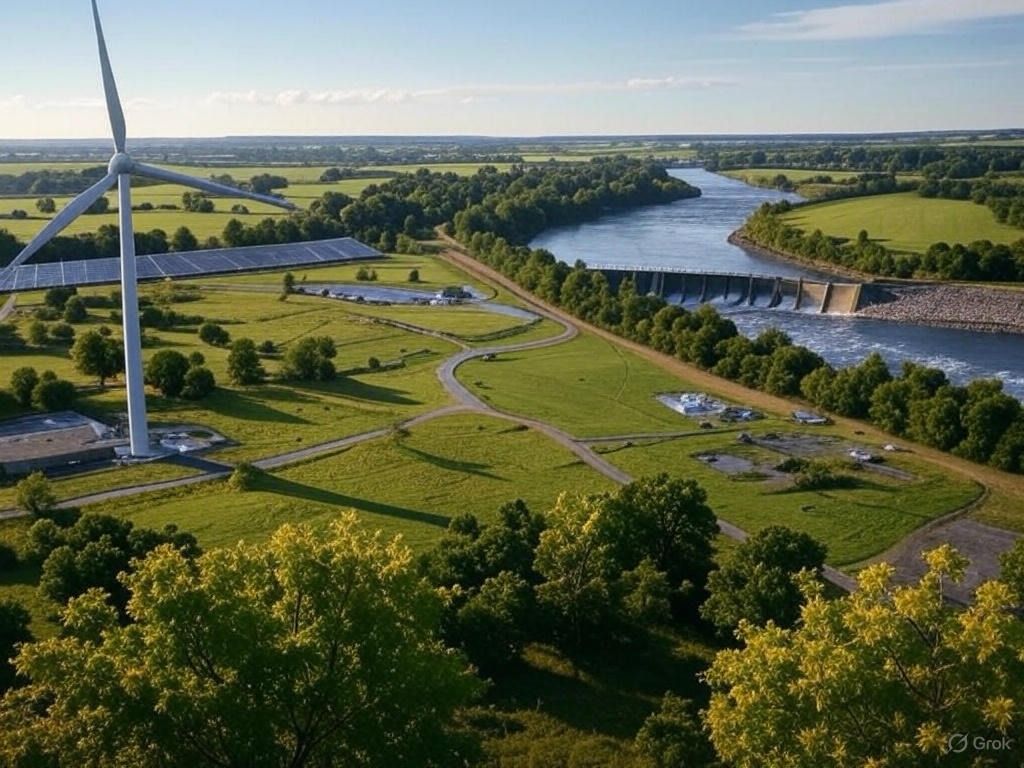Climate summits have the purpose of monitoring commitments and agreements made by countries to mitigate climate change.
Climate change is one of the most significant challenges humanity faces today. It's a global problem that must be tackled urgently. Greenhouse gas (GHG) emissions in the atmosphere are warming the Earth's temperature and causing dangerous and irreversible economic and environmental impacts. Global warming provokes, among other changes, more extreme weather that affects current and future generations and as a consequence, can have increasingly more serious repercussions on the economy, environment, our health, and daily life, in general.
Decarbonising the economy must be a paramount goal and requires a structural change in the energy model and transformation in our production and consumption. Against this challenge, the energy transition must be the centre of every political and economic strategy to facilitate decarbonisation in all sectors, especially industry, mobility, and electricity and to encourage the incorporation of primary energy sources with low CO2 emissions.
International coordination mechanisms
The increase of GHG emissions into the atmosphere is closely related to the use of fossil fuels, and the energy sector is called to play a vital role in addressing this global challenge. Growing consciousness of this environmental issue has led to several international agreements for achieving environmentally-sustainable economic growth. First came the principal international mechanism, the United Nations Framework Convention on Climate Change (UNFCCC), which gave rise to the Kyoto Protocol and the decisions and commitments made at the various "Conferences of the Parties" (COPs) that resulted in the Paris Agreement in 2016 and the Climate Summit (COP26) held in Glasgow in 2021.
Climate summits
Climate summits consist of annual meetings between UNFCCC signatory countries to track the progress of commitments made in previous editions.
The UNFCCC began in 1992 at the Earth Summit in Río de Janeiro and set a precedent for the protection of the environment. There, for the first time, a multi-lateral treaty recognised that climate change was a global problem. The signatory nations were obliged to adopt measures to "stabilise" the concentration of GHGs in the atmosphere to conserve the environment.
What is the mission of these climate summits?
Annual climate summits or COPs aim to assess how member states are applying the content of the previously agreed treaty and furthering agreements to fight climate change. Thus, they are the most important framework for discussion in this field and a supranational instrument for decision-making and advancing the proposed objectives.
How many climate summits have been held?
Including the first climate summit, or COP, held in 1995 in Berlin, 26 conferences have been held, hence the number assigned to the recent summit in Glasgow. Not all the COPs have had the same relevance. Some have made just minor progress, while others ended in disaster – for example, 2009 in Copenhagen, where China and the United States found themselves at an impasse and declared the commitments not legally binding – but others have been consequential, such as COP3, when the Kyoto Protocol was adopted, and COP21, where the Paris Agreement was born.
Paris Agreement
The Paris Agreement, signed in November 2016, set a new focus for responding to the issue of climate change: a transformation in the way we produce and consume.
After more than 20 years of global negotiations, this agreement became the first binding treaty in which all countries—not only developed ones—promised to work toward one target: limiting the increase of global temperatures to below 2°C over pre-industrial levels, and if possible, to below 1.5°C.
Keeping global warming below 2°C requires an enormous effort, especially in the energy sector, which generates around two-thirds of global greenhouse gas emissions.
The targets set in the Paris Agreement have served as a guide for setting strategic plans for reducing greenhouse gas emissions (especially CO2). These targets remained in place at the 2021 Climate Summit in Glasgow (COP26) and were backed by the majority of participating nations.
Glasgow climate summit (COP26)
The United Nations Framework Conference on Climate Change in Glasgow, otherwise known as COP26, was held from 31 October to 13 November. It was a much-anticipated summit for many reasons. On the one hand, the United States would once again commit to the Paris Agreement with Joe Biden as president. And on the other, increasing social awareness and growing scientific evidence on the "profound, irreversible, and existential" effects of climate change have solidified its appearance in political, media, and business agendas.
COP26: Lines of action and targets
The COP26 slogan was "We can get real on coal, cars, cash, and trees". The main objective was to find consensus among UNFCCC signatory nations for monitoring the commitments made in previous summits and to continue making progress on anticipated lines of action: the mitigation of GHG emissions, adaptation to climate change, an improvement in funding for developing countries, and strengthening of the current international framework for collaboration.
Agreements reached at COP26: The Glasgow Climate Pact
The Glasgow Climate Pact is a document that captures the two weeks of political and technical debates that took place at COP26. The final draft of this document was complex, with last-minute changes and delays in negotiations, but a unanimous agreement between the 196 participating countries was finally reached.
The main agreements reached in the Pact are that:
- Global warming should not surpass 1.5°C in 2030. And it is fundamental that we achieve net-zero emissions by mid-century.
- We must reduce the use of fossil fuels.
- Richer nations have pledged 100 billion dollars annually for developing countries by 2030.
- A support line will be set up to address damage caused by climate change in the most vulnerable countries.
- More transparency will be required when complying with international commitments made regarding climate change.
- New rules governing carbon markets.
Egypt will host COP27
During the Glasgow conference, it was announced that the next COP would take place in the Egyptian city of Sharm el-Sheikh, on the coast of the Red Sea. This summit's agenda will include following up on agreements reached in Glasgow, such as examining national emissions reduction plans (Nationally Determined Contributions, or NDC). However, it's expected that greater emphasis to be placed on the increase in funding to developing countries.




